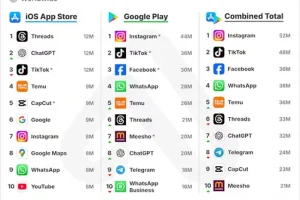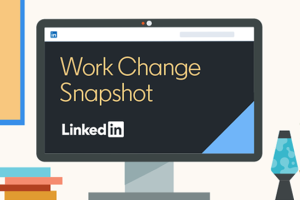I hosted a head-of-TA workshop event for large companies in September 2024 where my friend Bryan Adams (not that Bryan Adams, but the CEO of HappyDance), who’s a guru on all things employer branding and career sites, framed up costs in a new, interesting way.
We were sharing best practices for building CFO-proof business cases and he pointed out that much of the money talent acquisition (TA) orgs spend on ads and sourcing tools are sort of a tax that’s paid because the talented candidates a TA team wants aren’t aware of, attracted to, or motivated by the TA team’s opportunities.
A tax, though?
Yes!
Well, sort of.
His point was that we all have to pay a tax to do more attraction work because we’re not generating the quality and quantity of inbound candidates through our reputation as a great employer alone.
He wasn’t saying we should stop paying for job ads. But it was an interesting reframing.
1. Taxes we pay = Extra effort
Let me explore this idea a bit more. There are probably jobs you recruit for that are super easy, with lots of high-quality inbound candidates that you don’t have to work hard to attract — they come through your career site or referral channels. Applicants apply to these jobs without much effort on your part to source and engage them (no “tax”) because you’re a very attractive employer to the talent interested in those kinds of jobs.
In Bryan’s example, the “tax” we pony up is paid in extra effort (ads, outbound sourcing) that help us attract talent that wasn’t previously aware of us or interested in us.
This isn’t an article about recruitment marketing and ad spend, though.
I’m more interested in the broader framing around this idea of a tax. In our recruiting leadership training, we discuss two types of costs: 1) costs that are explicit and 2) costs that are embedded and often hidden in our TA metrics.
2. Taxes we pay = Hidden costs
I’ll give you a few examples of how my team and I think about these embedded costs, which I’m now calling taxes (thanks Bryan!). All of them are very expensive.
- The taxes we pay in a lower close rate and longer time to fill because we make offers below market. We save a little money in compensation but pay big taxes (more vacancies, longer time-to-fill, more overtime pay for existing teams, more attrition/backfills, lower quality hires, and sometimes larger recruiting teams that have to work three times harder to find and close talent that’s willing to work for below-market pay).
- The taxes we pay in fat funnels — poor conversion from screen to interview to offer — because our hiring managers are completely unrealistic on their target candidate profiles and hiring teams aren’t aligned on what good looks like and don’t know how to interview and select the right talent. So, we miss out on a lot of good talent (false negative hiring decisions). This tax is one of the most expensive to the business, as fatter funnels means more interviewed candidates, which means 10, 20, even 30 more interviewer people-hours spent than is necessary.
- The taxes we pay when recruiters spend time chasing feedback from interviewers and hiring managers because we don’t have regular, scheduled, structured hiring decision meetings or an ATS or interview intelligence tool — with a culture of hiring manager accountability to enter/capture feedback — that makes quick, quality hiring decisions possible.
- The taxes we pay in lost finalist candidates because we involve too many interviewers, have too many unnecessary compensation approvals, and are therefore super slow to move top candidates from interview to offer.
- The taxes we pay because our candidate experience stinks — in candidates who read our online reviews and never apply, in interviewed candidates who are turned off by their bad experience with us and drop out of our process, in employees who refuse to refer quality people because they know their referrals won’t have a great experience, etc.
- The taxes we pay in recruiting and attrition because our onboarding sucks and isn’t well led.
I could go on. There are so many taxes we pay — in lost candidates, in vacancies that cost the business money, in interviewer and hiring manager and recruiter people-hours wasted because our process or approach is terrible. These are problems almost all of us face.
What am I supposed to do about these taxes, John? How do I lower my tax burden?
I say this a lot: No pain, no change.
One of our biggest opportunities as TA leaders is to better articulate the cost of bad decisions, bad strategy, bad process, bad candidate experience. We have to bring the pain!
We need to better capture the cost of the current state — the taxes we’re paying because we’re tolerating bad tactics, bad behaviors, order-taking recruiters, unrealistic hiring managers, and poor consequences or no consequences to the individuals who perpetuate the stuff that leads to big taxes.
We can start by getting our recruiters to operate like talent advisors and push back on those hiring managers who want to do things that come with a high tax — like involving 12 people in the interview process for a midlevel role or going to offer with a salary well below market or wanting to see more candidates even though we’ve already presented a slate of five qualified, interested, available, affordable candidates.
Frame your tax bill in terms your stakeholders will immediately grasp
As TA leaders, we can and should work hard(er) to capture and surface the costs/taxes in terms that make sense to the stakeholders we need to influence. Hiring managers need to experience the tax (consequences to speed and quality); HR and compensation needs to see the impact to vacancy rates and speed and attrition; and our bosses need to see the trade-offs we’re making and taxes we’re paying now to fund the very expensive current-state tax rate, all so that we can get funding or at least reallocate funding to the root issues creating the tax burden.
Is this easy to do? Yes, super easy.
Just kidding.
This is super hard. It’s why you make the big bucks. This is leadership. This is root-issue diagnosing, problem-solving, influencing, culture change, and a lot of tough conversations.
But it’s worth it.
Getting your tax burden down so that you’re freed up to do the really smart stuff that delivers more speed, more quality, more diversity, while giving hiring teams time back, is the work of legends in our profession.
Nobody wants to pay unnecessary taxes, right?
John Vlastelica is a former corporate recruiting leader turned consultant. He and his team at Recruiting Toolbox are hired by world-class companies to train hiring managers and recruiters, coach and train TA leaders, and help raise the bar on who they hire and how they hire. If you’re seeking more best practices, check out the free resources for recruiters at TalentAdvisor.com and for recruiting leaders at RecruitingLeadership.com. Additionally, if you’re a TA leader who missed John’s workshops at LinkedIn Talent Connect in Phoenix in late October 2024, you can download his slides and worksheets on how AI will impact the size and makeup of our TA orgs.
Copyright Recruiting Toolbox, Inc.










